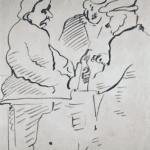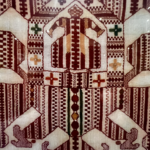1783 – 1789. Architect: Ivan Starov
The Tauride Palace was built by Ivan Starov, the recognized master of classical design for Prince Grigorii Potemkin of Tauris—allegedly the Empress’s secret consort. Catherine the Great bestowed the title of Prince of Tauris on Grigorii Potemkin after his annexation of Crimea, a Black Sea peninsula known as Tauris in antiquity. Prince Potemkin was the commander-in-chief of the Russian army in the Second Russian-Turkish War and, having little use of the palace, sold it to the state treasury within a year after its completion. Catherine presented the palace back to the Prince after his successful capture of the Turkish fortress of Izmail on the Danube.
As William Brumfield writes in his book A History of Russian Architecture, the palace is a model of neoclassical simplicity, widely imitated in the designs of noble estate houses across Russia. The front of the palace is decorated with a Tuscan portico and a rotunda with a low dome. The courtyard is flanked by wings, each having a Doric portico of four columns. Starov’s minimal use of architectural decoration contrasted with the richness of the initial interior design. However, the interior of the Tauride Palace has not survived in its original form. Emperor Paul, in a gesture of rage against the memory of his mother Catherine II and her supporters, converted the building into the barracks and stables of the Horse Guards. Alexander I had the palace restored and put to use as a royal residence and, under subsequent rulers, an exhibition hall.





You must be logged in to post a comment.